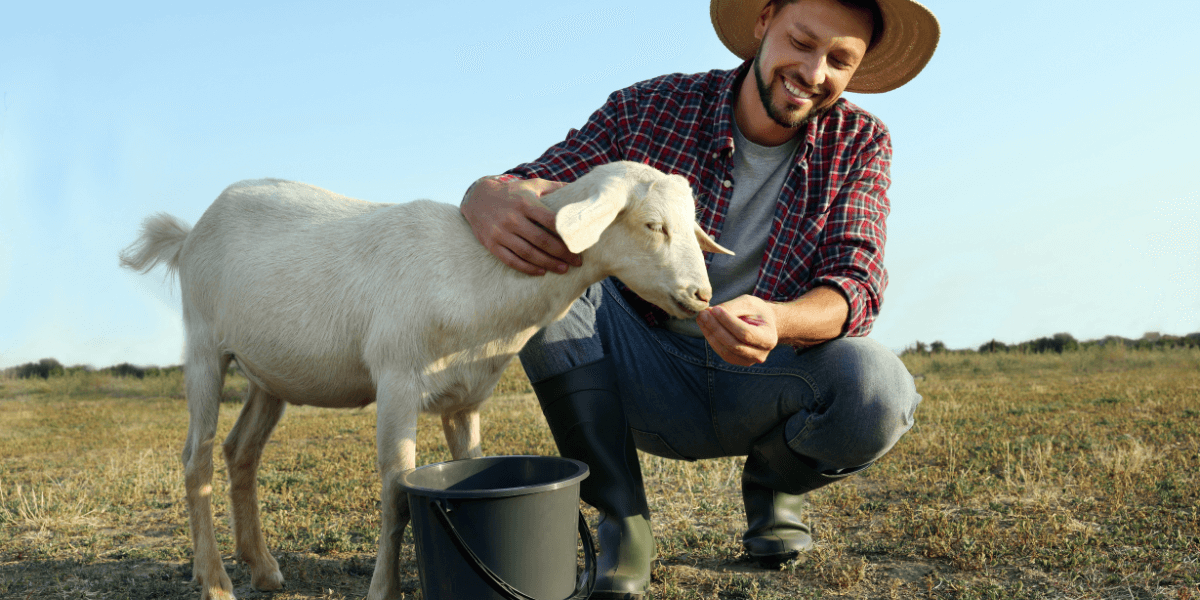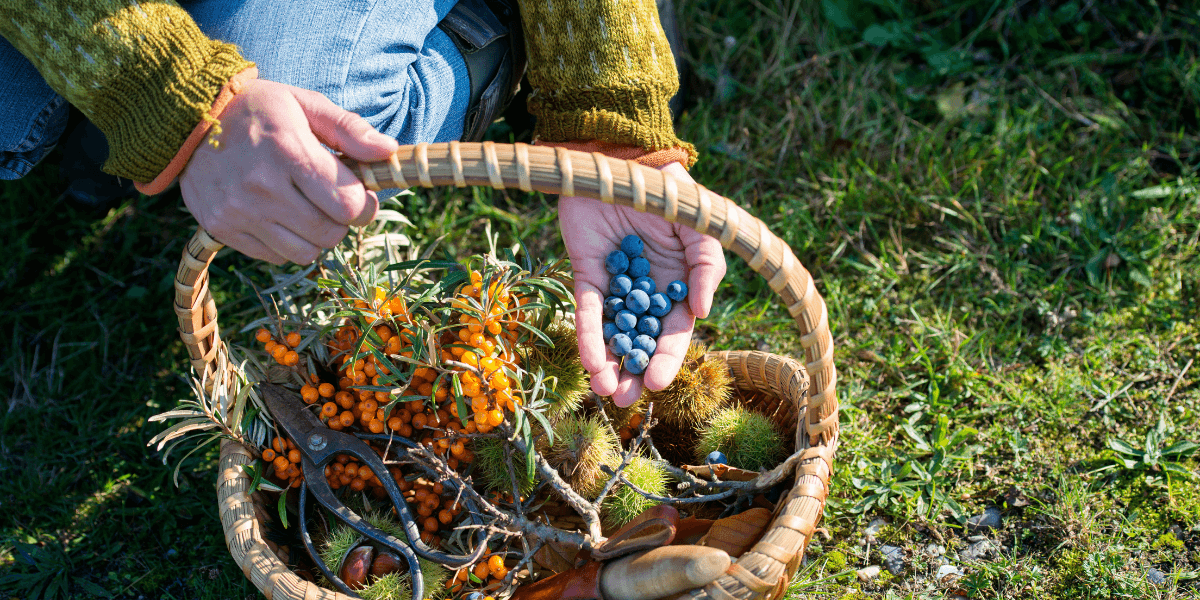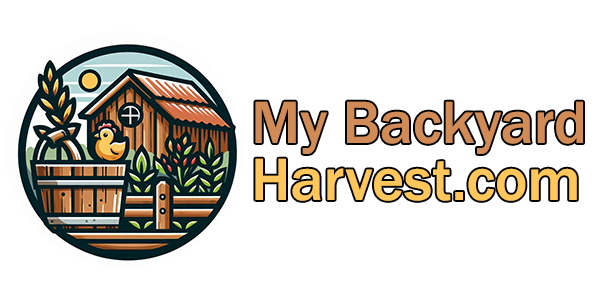10 Essential Homesteading Skills Every Beginner Should Learn

Homesteading is a lifestyle that's gaining popularity among people from all walks of life, from young families to retirees. It's a way of living sustainably, reducing reliance on modern society, and saving money on food and other expenses. Whether you're interested in organic gardening, permaculture, raising livestock, or simply achieving greater self-sufficiency, homesteading offers something for everyone.
In this blog post, we'll explore 10 essential homesteading skills that every beginner should learn. From gardening and animal husbandry to food preservation and emergency preparedness, we'll cover everything you need to know to start your own homestead.
But before we dive into the essential skills, let us tell you a bit about what homesteading is and why it's becoming increasingly popular. By the end of this post, you'll have a better understanding of the benefits of homesteading and how you can get started on your own homesteading journey.
If you're interested in learning more about homesteading and sustainable living, be sure to subscribe to our website for valuable resources and newsletters. We're dedicated to helping you achieve your homesteading goals and live a more self-sufficient, sustainable lifestyle. So let's get started!
10 Essential Homesteading Skills Every Beginner Should Learn
Homesteading requires a wide range of skills, from gardening and animal husbandry to food preservation and emergency preparedness. As a beginner, it can be overwhelming to know where to start. That's why we've compiled a list of 10 essential homesteading skills to help you get started on your homesteading journey.
1. Gardening (including permaculture and food forest design)

Gardening is a cornerstone of homesteading, and it's one of the most important skills any beginner should learn. Not only does gardening provide you with fresh, healthy food year-round, but it's also a great way to stay active and connect with nature.
Permaculture is a system of gardening that mimics the natural ecosystem to create a self-sustaining garden. By designing your garden to work with nature, you can minimize waste, conserve water, and create a healthy, thriving environment for plants and animals alike.
Food forest design takes permaculture a step further by creating a garden that mimics a forest ecosystem. By planting trees, shrubs, and other perennial plants, you can create a diverse and resilient garden that requires minimal maintenance.
When starting your garden, it's important to choose the right location and soil type. Some crops prefer full sun, while others require shade. It's also important to consider the pH level of your soil and any potential contaminants.
In addition to choosing the right location and soil type, it's also important to choose the right crops. Some crops are better suited for certain climates or soil types, while others require specific growing conditions. It's important to research the crops you want to grow and ensure they're a good fit for your garden.
Once you've planted your garden, it's important to maintain it properly. This includes watering, weeding, and pest control. It's also important to rotate crops and practice companion planting to prevent soil depletion and pest infestations.
By incorporating permaculture and food forest design into your gardening practices, you can create a thriving, self-sustaining garden that provides you with fresh, healthy food year-round.
2. Animal husbandry (including raising livestock for meat, milk, and eggs)

Animal husbandry is an important aspect of homesteading, as it allows you to raise your own meat, milk, and eggs. Whether you're interested in raising chickens, goats, cows, or other livestock, it's important to know how to care for them properly and provide them with a healthy environment.
When raising livestock, it's important to choose breeds that are well-suited for your climate and environment. You'll also need to provide them with proper shelter and fencing, as well as a healthy diet. This may include a mix of grains, grasses, and other feed.
For chickens, you'll need to provide them with a safe, comfortable coop and nesting boxes for laying eggs. You'll also need to collect eggs regularly and provide them with fresh water and feed.
Goats are known for their milk production, and they can provide a valuable source of milk for homesteaders. They also require a more substantial shelter than chickens, as well as access to grazing land and fresh water.
Cows are another popular livestock choice for homesteaders, as they can provide both milk and meat. However, they require a significant amount of space and feed, as well as proper fencing and shelter.
In addition to providing proper care and nutrition, it's important to keep your animals healthy by providing regular veterinary care and monitoring them for signs of illness or injury.
By raising your own livestock, you can ensure that your meat, milk, and eggs are of the highest quality. Plus, it's a great way to connect with nature and become more self-sufficient on your homestead.
3. Food preservation (including canning, dehydrating, and fermenting)

Preserving your own food is an important part of homesteading, as it allows you to have fresh, healthy food year-round. There are several methods of food preservation, including canning, dehydrating, and fermenting.
Canning is a popular method of preserving fruits, vegetables, and meats. It involves placing food in jars and sealing them with a lid, then processing them in a hot water bath or pressure canner. This kills any bacteria and creates a vacuum seal, which helps prevent spoilage.
Dehydrating is another popular method of food preservation. It involves removing the moisture from food, which helps prevent spoilage and extends shelf life. Dehydrated foods can be stored in airtight containers and rehydrated when needed.
Fermenting is a traditional method of preserving food that involves using beneficial bacteria to break down sugars and create lactic acid. This helps preserve the food and creates a tangy, sour flavor. Fermented foods include sauerkraut, kimchi, and yogurt.
When preserving food, it's important to follow proper safety precautions to prevent contamination and spoilage. This includes using clean equipment and following recommended processing times and temperatures.
By mastering food preservation techniques like canning, dehydrating, and fermenting, you can enjoy fresh, healthy food year-round and reduce your reliance on store-bought products. Plus, it's a great way to save money and connect with traditional homesteading practices.
4. Basic carpentry (including building structures and furniture)

Basic carpentry skills are an essential part of homesteading, as they allow you to build structures and furniture that meet your specific needs. Whether you're building a chicken coop, raised garden beds, or a tiny house, basic carpentry skills can help you save money and create a customized living space.
When starting out with carpentry, it's important to have the right tools and equipment. This includes a saw, hammer, drill, measuring tape, and level. You'll also need to choose the right type of wood for your project and learn how to safely cut and shape it.
When building structures, it's important to ensure they are sturdy and built to code. This may involve obtaining permits and following local building regulations. It's also important to consider factors like insulation, ventilation, and weatherproofing.
In addition to building structures, carpentry skills can also be used to build furniture. This may include tables, chairs, shelves, and cabinets. By building your own furniture, you can save money and create pieces that fit your specific needs and preferences.
By learning basic carpentry skills, you can take on a wide range of homesteading projects and create a living space that's customized to your needs. Plus, it's a great way to save money and connect with traditional homesteading practices.
5. Composting (including vermicomposting and using compost for gardening)

Composting is an important part of homesteading, as it helps to reduce waste and create nutrient-rich soil for your garden. There are several methods of composting, including traditional composting, vermicomposting, and using compost for gardening.
Traditional composting involves combining organic matter like kitchen scraps, yard waste, and manure in a pile or bin. Over time, the organic matter decomposes and creates nutrient-rich soil that can be used to fertilize plants.
Vermicomposting is a type of composting that uses worms to break down organic matter. Worms eat the organic matter and excrete nutrient-rich castings, which can be used to fertilize plants. Vermicomposting can be done indoors or outdoors and is a great way to compost in small spaces.
Using compost for gardening is a great way to improve soil quality and reduce the need for chemical fertilizers. Compost can be added to garden beds or used as a top dressing around plants. It provides a slow-release source of nutrients and helps improve soil structure and water retention.
When composting, it's important to use the right mix of organic matter, including carbon-rich materials like leaves and straw and nitrogen-rich materials like kitchen scraps and manure. It's also important to maintain the right moisture and temperature levels for optimal decomposition.
By incorporating composting, including vermicomposting, and using compost for gardening into your homesteading practices, you can reduce waste and create nutrient-rich soil for your garden. Plus, it's a great way to connect with traditional homesteading practices and reduce your environmental impact.
6. Cooking and baking (including using seasonal ingredients and alternative cooking methods)

Cooking and baking are essential skills for homesteading, as they allow you to make use of the fresh, healthy ingredients you've grown or raised. When cooking and baking, it's important to use seasonal ingredients and alternative cooking methods to make the most of your harvest and create delicious, nutritious meals.
Using seasonal ingredients means using ingredients that are ripe and plentiful during a particular time of year. This can include fruits and vegetables like tomatoes, cucumbers, and berries in the summer, and apples, squash, and pumpkins in the fall. By using seasonal ingredients, you can enjoy the freshest, most flavorful produce and support local farmers.
Alternative cooking methods include techniques like grilling, smoking, and roasting. These methods can add unique flavors and textures to your food and help you make the most of your harvest. For example, smoking meats can help preserve them and add a smoky flavor, while roasting vegetables can bring out their natural sweetness.
When cooking and baking, it's important to use healthy, whole-food ingredients and avoid processed foods. This can help you maintain a healthy diet and reduce your environmental impact. It's also important to experiment with different flavors and cooking styles to keep meals interesting and exciting.
By using seasonal ingredients and alternative cooking methods, you can create delicious, nutritious meals that make the most of your homestead harvest. Plus, it's a great way to connect with traditional homesteading practices and reduce your environmental impact.
7. Energy conservation (including using alternative energy sources like solar and wind power

Energy conservation is an important part of homesteading, as it helps to reduce your environmental impact and lower your energy bills. There are several ways to conserve energy on a homestead, including using alternative energy sources like solar and wind power.
Solar power is a popular alternative energy source for homesteaders, as it can be used to power a wide range of devices and appliances. Solar panels can be installed on a rooftop or in a sunny area of your property to capture energy from the sun. This energy can then be stored in batteries or used directly to power lights, appliances, and other devices.
Wind power is another alternative energy source that can be used on a homestead. Wind turbines can be installed in a windy area of your property to capture energy from the wind. This energy can then be stored in batteries or used directly to power lights, appliances, and other devices.
In addition to using alternative energy sources, there are several other ways to conserve energy on a homestead. This may include using energy-efficient appliances, turning off lights and electronics when not in use, and using passive solar design to heat and cool your home.
By conserving energy and using alternative energy sources like solar and wind power, you can reduce your environmental impact and save money on energy bills. Plus, it's a great way to connect with traditional homesteading practices and become more self-sufficient.
8. Foraging and wildcrafting (including identifying and using wild plants for food and medicine)

Foraging and wildcrafting are important skills for homesteaders, as they allow you to identify and use wild plants for food and medicine. When foraging and wildcrafting, it's important to know how to identify plants safely and responsibly and use them in ways that are sustainable and ethical.
Some common wild plants that can be foraged for food include berries, nuts, and wild greens. For example, blackberries, elderberries, and huckleberries are all delicious and nutritious fruits that can be found in the wild. Wild greens like dandelion greens, wild lettuce, and purslane can also be used in salads, soups, and other dishes.
In addition to food, many wild plants can also be used for medicinal purposes. For example, plantain leaves can be used to soothe insect bites and stings, while echinacea can be used to boost the immune system. It's important to research the uses and potential side effects of wild plants before using them for medicinal purposes.
When foraging and wildcrafting, it's important to follow ethical and sustainable practices. This may include only taking what you need, leaving enough for other animals and future generations, and avoiding plants that are endangered or over-harvested.
By learning how to forage and wildcraft, you can connect with nature and become more self-sufficient on your homestead. Plus, it's a great way to incorporate wild, nutrient-rich foods into your diet and explore the medicinal properties of plants.
9. Emergency preparedness on the homestead (including first aid and survival skills)

Emergency preparedness is an important aspect of homesteading, as it helps you to be ready for unexpected events like natural disasters, power outages, and medical emergencies. This may include developing first aid and survival skills to keep you and your family safe and prepared.
First aid skills are essential for any homesteader, as injuries and accidents can happen at any time. Basic first aid skills like CPR, wound cleaning and dressing, and splinting can help you respond quickly and effectively to a medical emergency. It's also important to have a well-stocked first aid kit on hand that includes items like bandages, antiseptics, and pain relievers.
Survival skills are also important for homesteaders, as they can help you to survive in a variety of emergency situations. This may include skills like fire starting, shelter building, and navigation. It's important to practice these skills regularly and have the necessary tools and equipment on hand, like a fire starter, a tent or tarp, and a compass.
In addition to first aid and survival skills, it's important to have a plan in place for emergencies. This may include having an emergency kit with essential supplies like food, water, and a radio, and identifying a safe place to go in the event of a natural disaster.
By developing first aid and survival skills and having a plan in place for emergencies, you can be better prepared to handle unexpected situations on your homestead. Plus, it's a great way to become more self-sufficient and connect with traditional homesteading practices.
10. Sustainable living practices (including reducing waste and using eco-friendly products)

Sustainable living is an important aspect of homesteading, as it helps to minimize your environmental impact and reduce your reliance on non-renewable resources. There are several sustainable living practices that you can incorporate into your homesteading lifestyle, including reducing waste and using eco-friendly products.
Reducing waste is an important part of sustainable living. This may include practices like composting food scraps and yard waste, using reusable bags and containers, and avoiding single-use plastics like straws and utensils. By reducing waste, you can help to conserve resources and reduce the amount of waste that ends up in landfills.
Using eco-friendly products is another important aspect of sustainable living. This may include using natural cleaning products, using cloth towels instead of paper towels, and using energy-efficient appliances. By using eco-friendly products, you can reduce your environmental impact and promote a healthier living environment.
In addition to reducing waste and using eco-friendly products, there are several other sustainable living practices that you can incorporate into your homesteading lifestyle. This may include practices like using renewable energy sources like solar and wind power, conserving water, and growing your own food.
By incorporating sustainable living practices into your homesteading lifestyle, you can reduce your environmental impact and become more self-sufficient. Plus, it's a great way to connect with traditional homesteading practices and promote a healthier, more sustainable way of living
Conclusion
In conclusion, homesteading is a fulfilling and rewarding lifestyle that offers many benefits for those who are willing to take the leap. Whether you're interested in growing your own food, raising animals, or becoming more self-sufficient, there are many ways to incorporate homesteading practices into your life.
Throughout this article, we've explored several key areas of homesteading, including composting, cooking and baking, energy conservation, foraging and wildcrafting, and emergency preparedness. By incorporating these practices into your homesteading lifestyle, you can reduce your environmental impact, become more self-sufficient, and connect with traditional homesteading practices.
We hope this article has inspired you to explore homesteading further and consider incorporating some of these practices into your life. By subscribing to our website, you can access valuable resources and newsletters to help you on your homesteading journey.
Remember, homesteading is not just a lifestyle, it's a mindset. It's about living in harmony with the land and embracing a simpler, more sustainable way of life. We encourage you to take the first step and start your homesteading journey today.
NEWSLETTER
Subscribe to get new release resources right away
CATEGORIES

Quick Links
Latest Posts
10 Essential Homesteading Skills Every Beginner Should Learn
on May 14, 2024
A Beginner's Guide to Vegetable DIY Raised Garden Beds.
on July 14, 2024
DIY | How to Build Own Backyard Chicken Coop: Complete Step-by-Step Guide
on July 16 2024
Created with © Survival Insights

